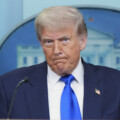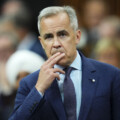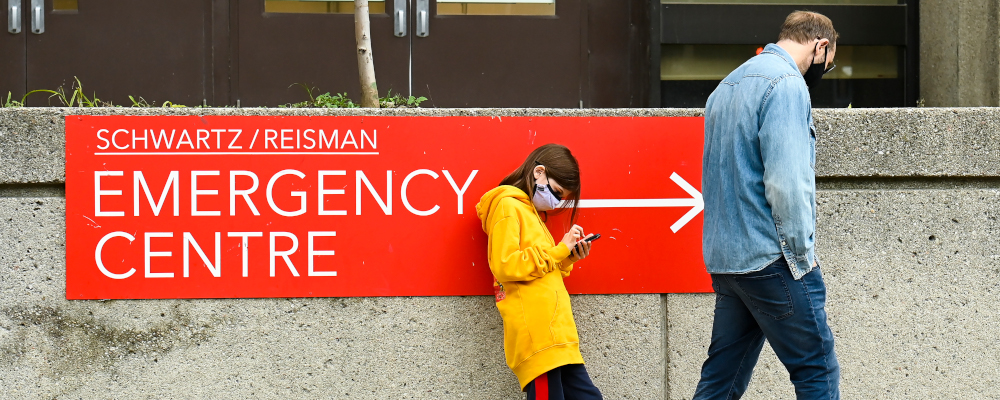“Access to a waiting list is not access to health care.” – Chief Justice Beverly McLaughlin, Justice John Major, and Justice Michael Bastarache, Chaoulli v Quebec (AG), 2005
In the years since the Supreme Court of Canada ruled that lengthy wait times for surgeries and treatments could constitute a violation of the Canadian Charter of Rights and Freedoms, the problem has only gotten worse.
In 2005, the year of the court’s ruling, the Fraser Institute estimated that the average wait time between referral from a doctor and treatment across the country was 17.7 weeks. In 2022, it was 27.4 weeks—the longest in the survey’s 30-year history. Access to a long and growing waiting list has become the painful norm for millions of Canadians who need access to health care.
The cause of these challenges is pretty straightforward: it’s a function of basic supply and demand. Health-care systems across the country are struggling to keep up with the demands of building demographic pressures, pandemic-induced backlogs, and growing mental health needs. Meanwhile, as we discovered during the pandemic, the country is home to fewer doctors, hospital beds, and diagnostic technologies than most of our international peers. In a world of constrained supply and rising demand, rationing is inevitable. Wait times are its natural by-product.
The federal and provincial governments have come in recent months to acknowledge that the situation is unsustainable. Prime Minister Justin Trudeau himself has spoken about how the country’s health-care systems are failing to “live up to the promise” that Canadians can access timely, reliable services and treatments regardless of where they live or what they earn.
New federal funding—including recent bilateral agreements with the provinces—will add billions of incremental dollars into provincial health-care systems over the next decade. That will presumably buy some expansion of health-care supply such as more facilities and health-care professionals. But it’s far from obvious that an additional $46.2 billion over the next 10 years (which on an annualized basis, is about 1.9 percent of total government spending on health care) is going to solve the supply-demand gap at the heart of Canada’s health-care challenges.
Consider for instance that the baby boom generation (currently those between the ages of 57 and 76) will fully reach age 65 by the end of this decade. Its oldest members will turn 85 in 2031. By then, nearly a quarter of Canada’s population will be seniors. This will put us on par with Japan’s current rate, the oldest country in the world.
This matters because old people consume a lot of health care. Roughly half of provincial health-care expenditures are currently dedicated to Canadians aged 65 and older even though they’re less than one-fifth of the total population. And for those aged between 85 and 89, provinces spend more than four times higher than the per capita average.
The key point here is that growing health-care demand will be inexorable over the coming years and it’s unlikely that governments will be able to spend enough for supply to keep up. Something else is going to have to give.
There are various ways to think about a health-care reform agenda focused on closing the supply-demand gap. On the supply side, it might involve shifting certain hospital-based surgeries to for-profit or non-profit surgical centres as some provinces have experimented with; reforming the education, training and credentialization of health-care professionals (such as doctors, nurses, and personal support workers) to expand the labour supply; rethinking hospital budgeting to encourage more efficient use of existing resources; or various other options to maximize or boost the supply of health care.
As for managing health-care demand, there’s scope to address mental health and substance abuse issues better and more proactively before they create demands on physicians and hospitals; experiment with co-payments and other user fees to encourage greater cost consciousness in health-care consumption; pursue public health measures that promote prevention and chronic-disease management; and other policies that ultimately constrain the growth of demand on health-care services.
These ideas are neither exhaustive nor will they resonate with everyone based on their own priorities, preferences, and views about trade-offs. But as a conceptual matter, thinking about Canada’s growing wait-times problem as fundamentally a function of supply and demand is useful for the purposes of policymaking. It can help us to identify different policy options on both sides of the classic economic equation and ultimately make judgements about the best mix of reforms to make meaningful progress.
The Hub isn’t satisfied however with simply leaving such progress in the hands of the same old voices. We need to crowdsource ideas from new and different sources. It’s time to elevate a new generation of policy thinkers and practitioners to tackle the “wicked problems” facing our country, including health-care wait times.
That’s why we are pleased to announce the launch of a new, annual initiative called The Hunter Prize for Public Policy. The prize, generously supported by the Hunter Family Foundation, aims to shake up Canadian policymaking by marshalling fresh ideas, energy and voices to take on a clearly-defined “wicked problem.”

Wicked problems, by the way, are policy issues or challenges that are difficult to solve for three reasons: (1) they involve interconnected economic, cultural, and social factors; (2) they tend to be long-term in nature; and (3) their possible solutions can be contentious due to entrenched thinking and interests.
Up to $50,000 in total prizes will be awarded each year to Canadians aged 40 and under for their innovative and practical policy ideas in response to a specific problem. The winning idea will ultimately be determined by an esteemed panel of judges. You can learn more about the prize here.
For the prize’s inaugural topic, prize participants are tasked with the problem of reducing health-care wait times. It’s timely, relevant, and fundamental to the economic and social well-being of Canadians. It’s been around for a long time and is desperately in need of new voices and new ideas that transcend ideology, partisanship, and conventional wisdom. We couldn’t think of a better fit to kick off The Hunter Prize for Public Policy.
We end therefore where we started with the concurring decision of Justices McLaughlin, Major, and Bastarache back in 2005. They warned then that “Delays in the public system are widespread and have serious, sometimes grave, consequences.” More than a decade-and-a-half later, the consequences of such delays are even more serious and bound to remain so as the population ages.
It’s good that our politicians are acknowledging the problem. But it’s not enough. We need solutions. Canadians need health care, not wait times. The Hunter Prize for Public Policy intends to be part of the solution.
Recommended for You

‘Another round of trying to pull capital from Canada’: The Roundtable on Trump’s latest tariff salvo

‘We knew something was coming’: Joseph Steinberg on how Trump is ramping up his latest tariff threats against Canada

Rudyard Griffiths and Sean Speer: Canada’s high-stakes standoff with Trump

Falice Chin: The ‘wild and weird’ Calgary Stampede



